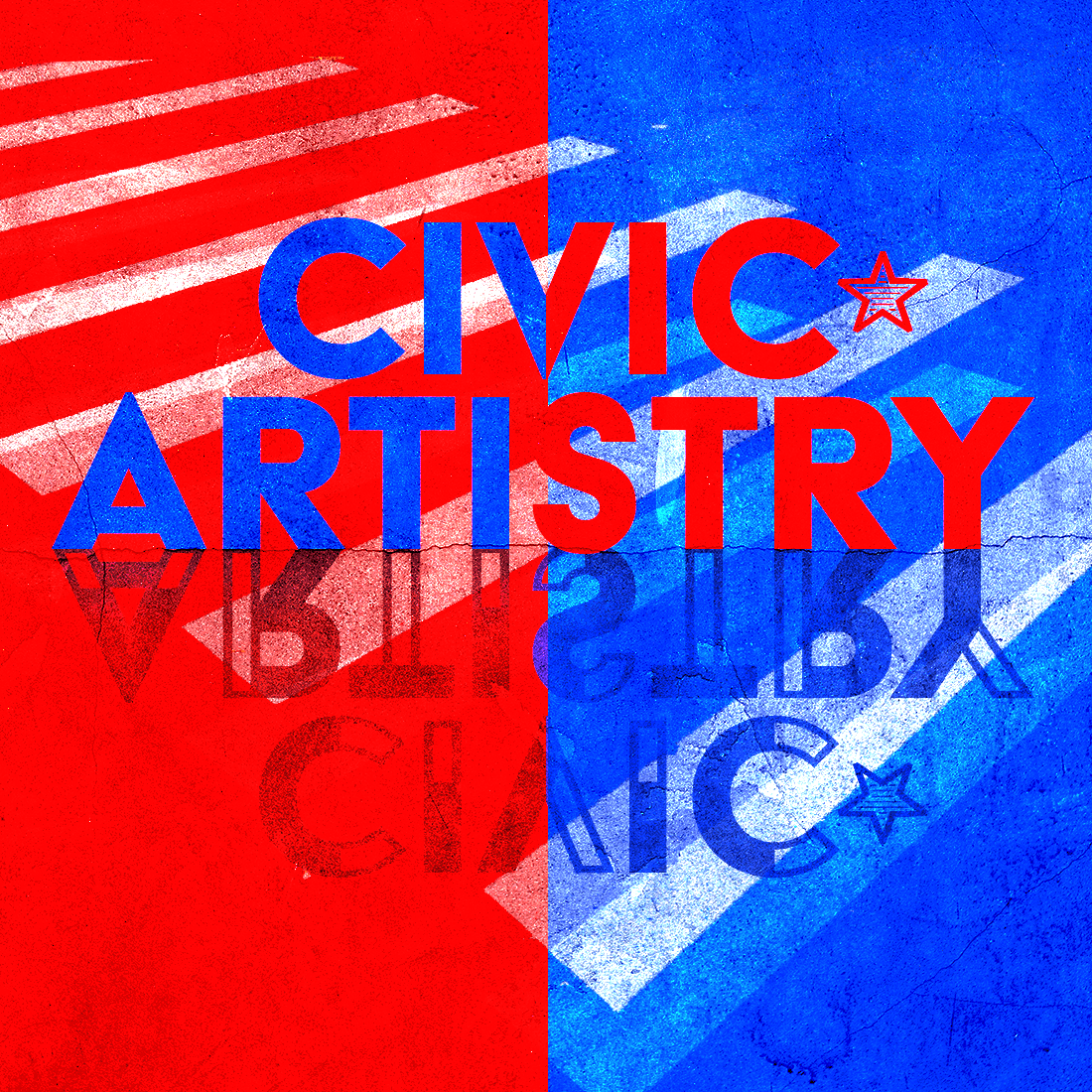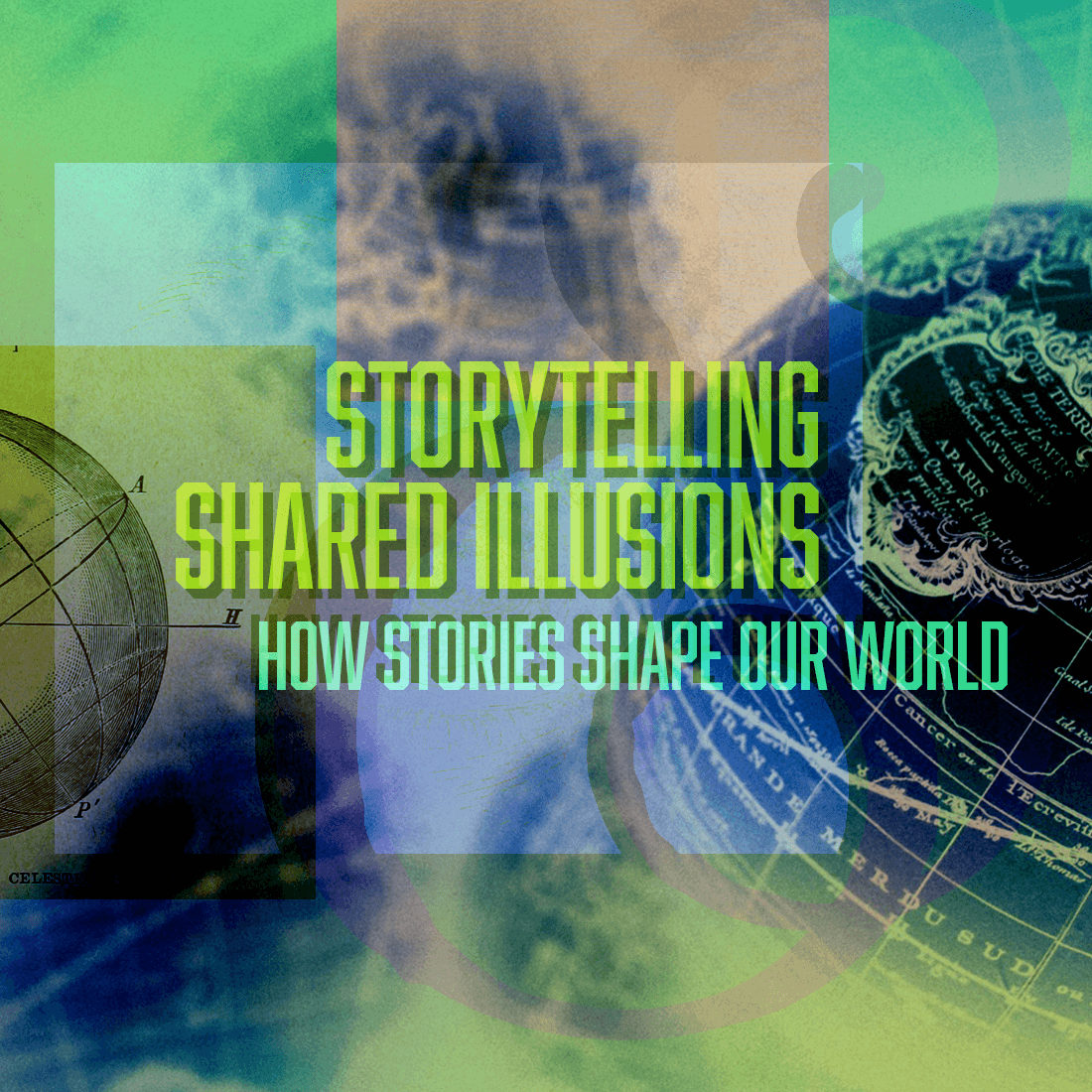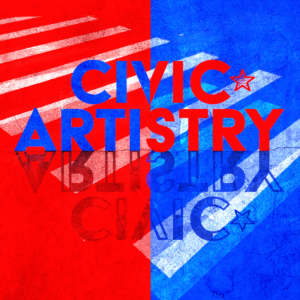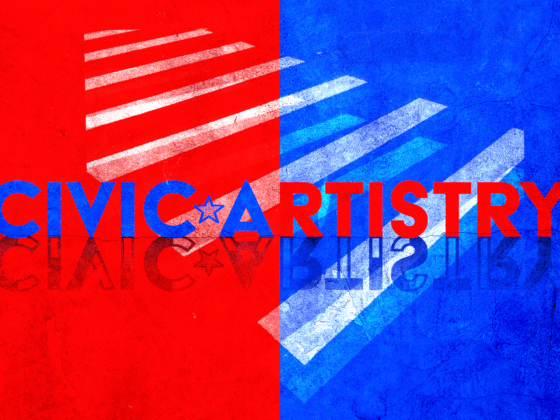NORA ROSENGARTEN
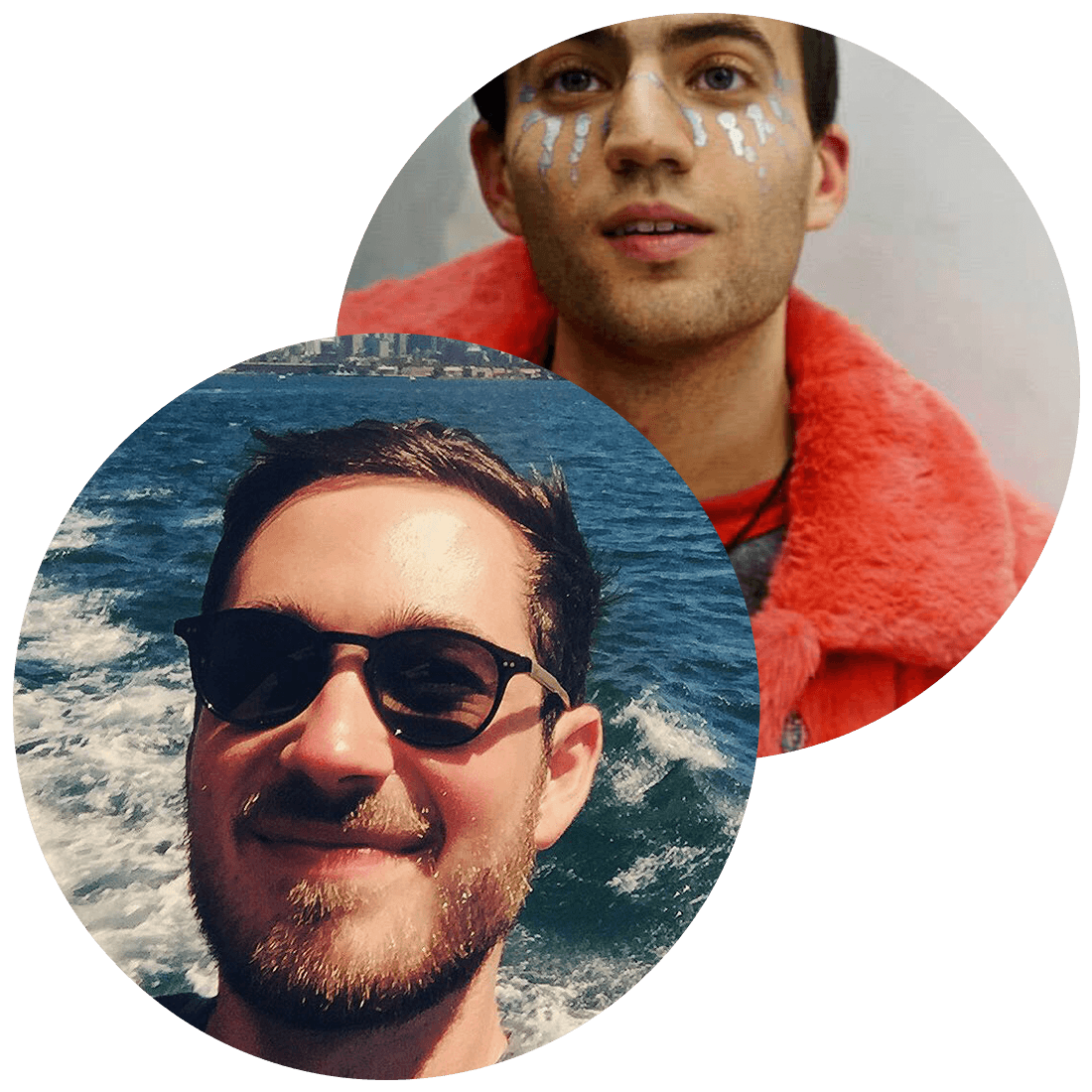
In this issue we talked with Matt Lightfoot and Tom Calahan about queer techno communities and their engagement with politics, particularly around ownership and identity. Tom runs a newsletter and collective called Techno Queers, which broadcasts suggested events, parties, news stories, and articles of interest. Matt contributes to Techno Queers regularly and DJs in Brooklyn.
Hi Matt and Tom, thanks for making the time to do this interview!
For starters, what is techno?
Matt Lightfoot
Thanks so much for having us, Nora! This is a tricky question that comes up a lot. The simple answer is that there isn’t a single definition. When we say “techno,” we are referring in the strictest sense to a specific genre of music that emerged in Detroit in the mid to late 1980’s. Techno grew out of a radical period of musical experimentation following the collapse of commercialized disco in the late 70’s and early 80’s. It found its origin with the fusion of black American music styles, particularly funk, soul, and nascent Chicago house, with electronic music coming from Europe (examples include German group Kraftwerk, Japanese synth-pop group Yellow Magic Orchestra, and Italo disco musicians like Giorgio Moroder). Let’s be clear — techno began as a black American musical form created by people of color for people of color.
What was the music they were making like? What conventions were they rejecting or upholding as they enacted this fusion?
Matt Lightfoot
Two critical developments to techno emerging as a distinct genre were: one, experimentation with drum machines and synthesizers, and two, the rejection of conventional musical structures found in Disco, Motown, and R&B. What the first techno producers did was take the electronic, machine-driven sounds they were hearing from Europe, and funnel them through a fundamentally rhythmic, dancefloor-focused lens. The result sounded both alien and soulful.
Juan Atkins (one of the “Belleville Three,” often referred to as the godfathers of techno) described techno as “music that sounds like technology and not technology that sounds like music.” In other words, all music we listen to is made with technology, whether you realized it or not. Techno, however, intentionally highlights and exaggerates the mechanical, non-human elements that underlie all music.
Model 500 – Night Drive [Time, Space, Transmat] | Source: ELVAR/YouTube
Single tracks typically run for 7-9 minutes (the maximum length of one side of a 12” record), and unlike most songs made at this time, which were shorter in length and designed for radio play, techno tracks were designed with the DJ in mind — that’s to say, structured in a way as to allow DJs to weave them together seamlessly over the course of a night before a room full of eager dancers. It’s also important to remember that techno evolved in parallel to the Chicago house scene (more about that later), and although these two styles have disparate elements, they did heavily influence one another in those early years. It’s sometimes difficult to tease apart the history of house and techno, particularly because house and techno are both parts of the same dancefloor liberationist ideals rooted in the Disco era.
How did environment and geography impact techno’s evolution? In what ways did this make techno a political act?
Matt Lightfoot
It is important to remember that all of this was unfolding against the backdrop of Detroit in the late 1980’s, which by that point was in the process of being reconfigured in the American imagination as a crime-ridden, dystopian wasteland. Detroit was hit especially hard by the automatization of factories and the movement of automobile plants overseas, so you had these huge and iconic places, like the Packard Auto Plant or the Michigan Central Station, that had fallen into disrepair by late 70’s and were left abandoned by this time. Early techno producers played deliberately with the idea of Detroit as a spectral metropolis, weaving Afro-futurist imagery into record labels, DJ monikers, and track names — for example, groups like Cybotron, Model 500’s track “No UFOs,” and record labels Metroplex and Transmat. In this way, techno rebelled against the notion of Detroit as a shell of its former (read, “white”) self, and instead reimagined it as a space-age hub of creativity driven by black Americans. Some of the first techno parties took shape in previously abandoned industrial spaces — literally injecting them with new life!
Model 500 – NO UFO’S | Source: oxfordfreeparty1991/YouTube
It’s incredible to imagine these artists playing in abandoned factories. It’s really poetic when you consider the role new technologies played in techno.
Totally — although I’d be careful to over-romanticize the first techno parties as a sort of ‘ur-rave’ from which all ‘abandoned warehouse partiesTM’ originated. What is absolutely true is that the first-wave techno pioneers played with the idea of repurposing existing technology to create a new form of music.Techno would likely not exist if not for the increasing affordability of drum machines and synthesizers throughout the 1980’s.
Kevin Saunderson – The Groove That Won’t Stop (1988) | Source: Julius Pileckas/YouTube
Techno was born in the heart of the AIDS crisis. How did this impact the musical movement’s evolution?
Tom Calahan
When we tell the history of techno, we have a tendency to refer to Berlin techno as a white, straight, male, Kraftwerk-influenced musical era, which ignores the very black, female, and queer influences on the movement and the places where the music was played. This interview by Northwestern University Professor of African-American Studies Alexander G. Weheliye for the 2015 CTM Festival is a great starting point for those wanting to learn more about this historic erasure.
Matt Lightfoot
Tom is absolutely right. The story of techno can erase queer and black and brown narratives. One part in particular that often gets left out is Detroit’s vibrant network of underground queer nightlife that existed between the end of disco and techno’s emergence in the mid to late 80’s. Ken Collier, a black and gay DJ as well as a key figure from this scene, held a residency at a massive gay club called Heaven throughout the 80’s and early 90’s that drew crowds in the thousands. Collier played house, disco, and techno, and in many ways helped create the nightlife infrastructure in Detroit that techno would later come to rely on. Clubgoers often flipped between Heaven and smaller local clubs, chasing where the best music could be heard, which led to remarkably mixed dancefloors and a productive blurring of genre lines.
Tom Calahan
Borrowing once more from Prof. Weheliye’s interview at CTM 2015: the group Underground Resistance exemplifies the slipperiness of defining whether an artist is strictly “house” or “techno.” Their discography incorporates a tremendous amount of variety. Some tracks are very ‘housey,’ with lots of vocals. Other tracks — especially those popular in Berlin — resemble cold, hard techno.
Underground Resistance – Jupiter Jazz | Source: ChicagoJackinSociety/YouTube
Adding to this slipperiness is that our genre touchpoints drift over time. What sounds like house to us nowadays was, in fact, very early techno.
Matt Lightfoot
Today, I think, there is a strong queer techno network of DJs, promoters, parties, and communities. It’s tricky, of course, to evaluate how connected that network is to the so-called “origins” of techno, because, again, it depends on who is telling the story.
You mentioned Berlin and the Berlin techno scene.
When did Europe get involved in techno music? How did this exchange operate?
Matt Lightfoot
By late 80’s, a feedback loop had been created between Detroit and Europe. The key moment arrived in 1988, when a record executive from Virgin Records sensed a commercial potential in the nascent techno sound and approached Derrick May and Juan Atkins — two members of the Belleville Three — to release an album called Techno! The New Dance Sound of Detroit. Fun fact: this actually marks the first time the word “techno” entered commercial musical discourse. The album was a huge hit in Europe and exploded onto the U.K. and German rave circuit. The first wave techno pioneers — I wouldn’t say ‘superstars’ since it was still relatively niche — became frequent guests at clubs throughout Europe, and some emigrated completely.
In a somewhat paradoxical way, techno’s international success propelled its growth throughout the Midwest and in cities like New York. By the early 90’s, Euro-techno’s center of gravity shifted toward Berlin — for reasons which could constitute a whole separate interview — where it has more or less remained until the present day. The key here is that European and American underground dance music have influenced and determined each other for nearly two decades.
Drexciya – 700 Million Light Years from Earth | Source: DonkeyFist/YouTube
Now that we’ve established the background, history, and technique behind techno music, how does techno intersect with queer communities?
Tom Calahan
We have to be careful not to talk about a singular queer community, when there are a multitude of queer communities, each with their own ethics for how to include newcomers. House, techno, and other forms of underground art and music have been historically created within and incorporated into queer spaces. I’m comfortable saying that these spaces have historically been sites of artistic innovation, community-building, and resistance, and that dance music today wouldn’t be what it is without the influence of queer people.
Who is included in these communities? If we strictly define which people and communities count as queer and which don’t count as queer, we betray the promise of queerness as an umbrella inclusive of everyone proclaiming their intent to stand beneath it. Hence, essentializing queerness is dangerous, yet for the sake of protecting queer bodies in real spaces in the real world, the essentialization of queerness is often necessary. Something is lost when “queer” parties are diluted by “straight” people. Something is also lost when straight or less legibly queer people are told no, and hence denied the opportunity to explore their queerness in a safer space. In my opinion, we must always keep the door open for a certain number of “straight” people to join us on the dancefloor: after a night in the queer underground, many of these folks will find out that they’re not quite as hetero as they thought! However, excluding those judged by the door person to be “not queer” for the sake of only letting in those judged to be “queer,” “queer enough,” or “one of the 10 allies we’ll let through the door tonight” is how these spaces become safer and more fun for those for whom the spaces are intended.
Borrowing from Octo Octa in conversation with DJ Sprinkles, these “safer spaces” should be understood as “risk spaces”: only by creating conditions for safety within these spaces can we enable those inhabiting them to let loose creatively and socially, to “take risks” the same way that less marginalized people take risks on more mainstream dancefloors. Via a strict door policy meant to protect “queer” people, exclusivity creates inclusivity.
I would love for the artistry of the door to make a comeback. Some parties have listed “Door by so-and-so”, which I like, because it highlights the fact that who you let through your door is a curation of people, just as the DJ is tasked with a curation of tracks. It also recognizes that door policies are subjective, based on whether the people working the door think you belong. Depending on the goals of the space, it might be fun to let in a small number of people who “don’t belong” (again, in the opinion of the door person), which can create a healthy amount of tension on the dancefloor, kind of like that at [Berlin techno club] Berghain. Who you let through the door is an error-prone but ultimately artful curation process that helps you achieve the stated goals of your party.
Absolutely. Great point, Tom.
Sometimes when a dancefloor feels queer for some people, it doesn’t feel queer for others.
This is why there are spaces geared toward more marginalized groups within the queer spectrum, such as queer people of color, trans & gender non-conforming people, and basically anyone who doesn’t feel “liberated” at parties dominated by cis gay white guys. This should not be mysterious to anyone. Cis gay white guys should not waste their energy being defensive about this or take it personally. It’s a fact of life that some people just don’t want to party with other people because of real-world power dynamics and unexamined privileges that follow us onto the dancefloor, rather than suddenly dissipate. Your gaze & body language might be perceived as transphobic, homophobic, racist, and sexist, no matter how much fun you’re having at the “queer” party.
Another point to add: just because you’re “queer” doesn’t mean you’re an inherently positive presence on the dancefloor — queer people can be mean, just like anyone else. Queer people often cultivate very strong boundaries in order to protect themselves from the constant streams of bullshit lobbed at them by society. Please don’t hate a queer person for not trusting you, especially initially. Please be empathetic toward the struggle of queer people to find a safer space for finally feeling liberated. If a queer person does not want you to be part of their dancefloor, please don’t make it all about you and your hurt feelings. Instead, be mindful of how your physical presence might be a trigger.
I’m interested in the ways that artists who are creating music are representing their identities. There are so few musicians in our society who are anything other than straight and cis.
It’s exciting to hear from different voices and enjoy music from different identities!
Matt Lightfoot
DJ Sprinkles, who was mentioned before, is one of the most important figures in queer underground dance music. She is a non-binary trans* person who grew up in rural America but moved to New York in the late 80’s, where she began DJ-ing in queer and trans* sex worker bars, located mainly in pre-Giuliani midtown Manhattan. DJ Sprinkles focuses, among other things, on New York house music clubs as an escape from violence, particularly state violence. It’s nearly impossible to succinctly capture her essence or overstate her importance, but I’d encourage your readers to check out her website, where you can find all of her ever-fascinating recordings and writings. Her Midtown 120 Blues, in partiresolutecular, is one of the most influential electronic albums of all time, and places queer narratives front and center of dance music’s development.
Dj Sprinkles – Grand centrak Part I (MCDE Bassline Dub) | Source: Oizupmit/YouTube
Let’s shift focus to Techno Queers. What is it and where did the name come from?
Tom Calahan
As with every genesis story, there are many intersecting narratives that came together to create Techno Queers. I used to go out with a big gaggle of gay guys, and we would make our own space on the dancefloor wherever we went. If you bring a certain number of people onto the dancefloor, you change the alchemy of the space, and it might be in a way that’s totally amazing, not just for us and our friends, but for everyone. This is a DIY-inspired ethos: let’s “take over” this dancefloor without anyone’s permission and make it our own, even if it’s just in the front left corner, and carve out our own safer space for queer expression. And we were able to successfully execute “take overs” of a few events, most notably that Resolute show featuring The Black Madonna and Mike Servito. That show ended up having a way gayer crowd, due to our collective efforts. We created a Facebook page that was originally called Techno Gays New York, so that we could connect with a larger group of people sharing this interest.
Early on, one of our collaborators proposed that we change our name to Techno Queers, to better reflect the gender diversity of our community, as well as our political outlook. At a certain point, I decided it was more effective to have an email list rather than a Facebook post. I have to admit — I’m a little bit fuzzy on when I started including articles about the intersection of social justice and dance music. Matt has contributed a number of biographies on artists. So it has turned into a platform that serves many purposes, and is constantly shifting.
It seems like, in this case, information is the true freedom. Without information, it’s impossible to access the things you need. They aren’t actually free! Especially when you’re seeking a specific type of community.
Right! So this was an attempt to reach people who may be seeking the same things I’m seeking and not know where to find them. Over time, that first audience has broadened to a second audience, which includes basically anyone seeking a queerer house or techno-oriented dancefloor. Everyone deserves good techno music, a liberated dancefloor, and a space where they can be freaks. So many people move to New York, live here for years, and become jaded and leave New York, and then you find out that the whole time they were here they never dipped one toe into the underground at all. So, Techno Queers is an intervention for people who think they know what’s going on and think they’ve seen it all. Because I’m sometimes giving shout-outs to smaller, queerer, more underground events, I’m always very careful about which info about these events is shared with our audience, even though our audience is predominantly word-of-mouth. Sometimes I include flyers for events without a link to location, tickets, or any other info, because the organizers are keeping it underground. It’s still meaningful to let our followers know these parties are happening.
In the course of this conversation, it has come out that both of these words ‘techno’ and ‘queer’ are really slippery terms. One pitfall of similar newsletters and guides I have read is that they define their audience and purpose in narrow, non-slippery terms, which can result in exclusion, misunderstanding, and hegemony.
I think it’s really smart that you’ve chosen fluid terms, because it ensures your audience is diverse and that the people who are drawn to you also value that fluidity.
Yeah. Absolutely. And these two terms are both very loose and expansionist, as you were getting at, but they are also putting their foot down. Here’s the metric I always think about when I think about who is following my email list: it can be anybody who is down with the concepts of queerness and techno. Whenever I do door discounts for parties or events, I always make sure that to get the discount, you have to say, “I’m on the Techno Queers list.” You have to be comfortable describing yourself as a part of that group, and that identification is essential for helping establish that dancefloor ethos we’ve discussed. You can absolutely be a straight person who is comfortable with saying those words. I don’t have enough time to actively curate whether particular members of my audience are “queer enough” or “techno enough” to be part of Techno Queers — I’ll leave that to the door person. Maybe this speaks to a certain level of privilege that I have as a cis gay white guy: I am less prone to harassment than more marginalized groups in the queer spectrum. The more vulnerable you are on the dancefloor, the more it matters to be precise about who you let join your email list, who you tell about your party, and ultimately who you let through the door.
Matt Lightfoot
Just to jump in and add my personal experience with Techno Queers — I can absolutely relate to what Tom says about moving to New York. When I came here two plus years ago, I knew I loved techno music, but I was coming at it from a predominantly white and straight world. In D.C., where I had moved from, I would go to techno events and often enjoyed the music but felt as though I was lacking something. Yet going to the usual gay bars and hearing the same pop playlist time and time again also didn’t feel right. Finding Techno Queers felt like an “Aha!” moment of having my cake and eating it too. Having a super tangible queer element alongside parties that sonically were pushing my boundaries was incredible. There are amazing queer events where you can also hear exciting, boundary-pushing music! They exist.
It’s great to feel like you don’t have to choose. You can be around people who recognize and respect your identity as well as being exposed to the music you’d like to. It’s amazing to have that environmental control.
Tom Calahan
We are the revolution we’ve been waiting for. This idea is at the center of all of this. It comes down to the reality that we can all get together in a space, like a protest, and make it our own. It’s like a self-fulfilling prophecy: if we say that this place deserves a queerer audience or that we’re highlighting it as part of a queer techno newsletter, then more queer people are likely to show up, and then when more people show up, it may become more of the space that we want it to be. You look around and it’s a queerer party, and we did that ourselves. The power is us all showing up at the same spot, and voting with our bodies. It’s beautiful, and we should use this power as much as we can.
Thank you both so much for your time!
Matt Lightfoot
He was born and raised in Seattle, but has spent his adult life in Boston, D.C., Paris, and for the last two years, New York. Since graduating from Georgetown, Matt has worked in both law and finance. He first discovered underground dance music while living in Paris, and since has fully immersed himself into house, techno, and queer dancefloors. Most recently, he has begun DJing himself around Brooklyn.
Tom Calahan
He writes the weekly guide for Techno Queers NY (signup at technoqueers.com). He’s also a promoter, a host, and an all-around rave slut who has helped organize underground parties in New York and Boston. The opinions expressed in this interview are his own and do not represent a broader consensus on these topics.

